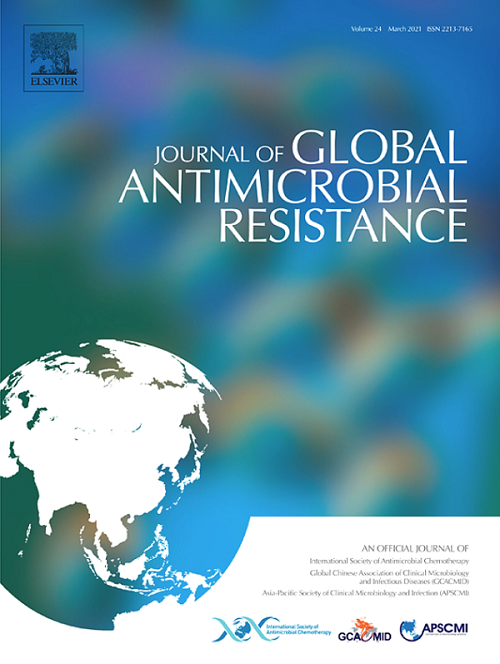Antibiotic resistance genes in rural public places mirror the pattern of clinical antibiotic resistance prevalence
IF 3.7
3区 医学
Q2 INFECTIOUS DISEASES
引用次数: 0
Abstract
AIM AND BACKGROUND
The World Health Organization's global action plan on antimicrobial resistance emphasizes the importance of integrated antibiotic resistance (AR) surveillance. Public spaces are crucial for both recipients and contributors to AR.
METHODS
This study, conducted in Yamagata Prefecture, Japan, addresses the rising prevalence of clinical AR by examining the prevalence of AR genes in public places (n=900). We analyzed 229 resistance genes and 25 mobile genetic elements using advanced quantitative polymerase chain reaction methods.
RESULTS
This first large rural surveillance in Japan showed that AR profiles mirror the AR gradient observed in clinics. Locational variations were identified in AR gene patterns. The most abundant were AMR genes encoding resistance toward multi drug resistance, tetracyclines, aminoglycosides, beta-lactams, and sulfonamides. A total of 27 ARGs were detected in at least half of the locations. The genetic landscapes of ampC, blaNDM-1, blaKPC, blaVIM, blaIMP, bla-CTXM, mecA, or blaIMP and vanA genes displayed significant diversity.
CONCLUSION
These findings underscore the necessity for regular surveillance and control measures tailored to the distinct geographic regions, to address antibiotic resistance effectively.
求助全文
约1分钟内获得全文
求助全文
来源期刊

Journal of global antimicrobial resistance
INFECTIOUS DISEASES-PHARMACOLOGY & PHARMACY
CiteScore
8.70
自引率
2.20%
发文量
285
审稿时长
34 weeks
期刊介绍:
The Journal of Global Antimicrobial Resistance (JGAR) is a quarterly online journal run by an international Editorial Board that focuses on the global spread of antibiotic-resistant microbes.
JGAR is a dedicated journal for all professionals working in research, health care, the environment and animal infection control, aiming to track the resistance threat worldwide and provides a single voice devoted to antimicrobial resistance (AMR).
Featuring peer-reviewed and up to date research articles, reviews, short notes and hot topics JGAR covers the key topics related to antibacterial, antiviral, antifungal and antiparasitic resistance.
 求助内容:
求助内容: 应助结果提醒方式:
应助结果提醒方式:


